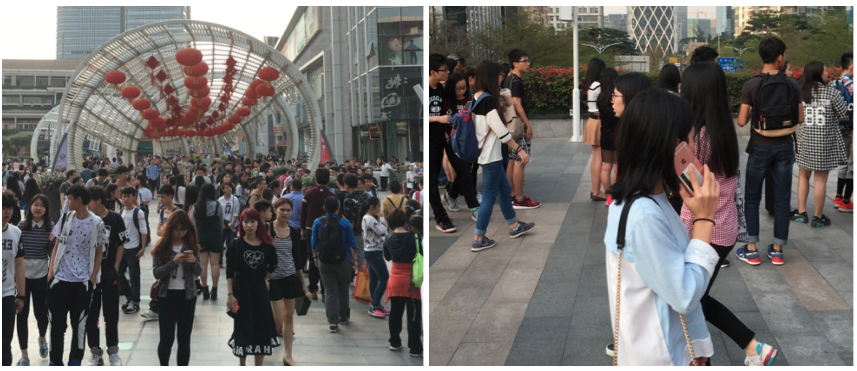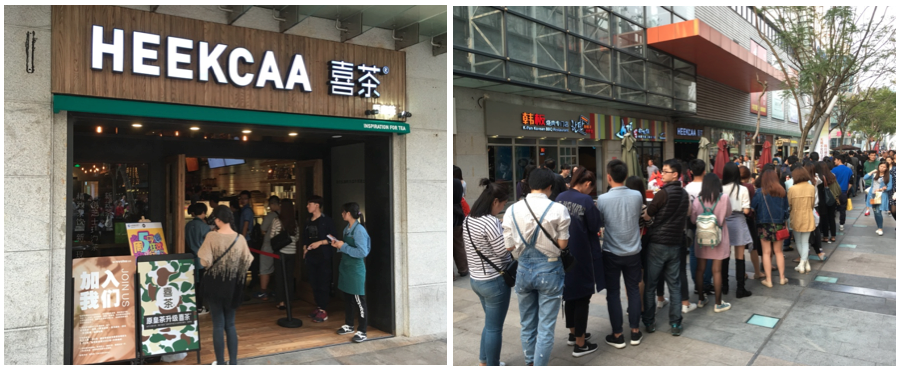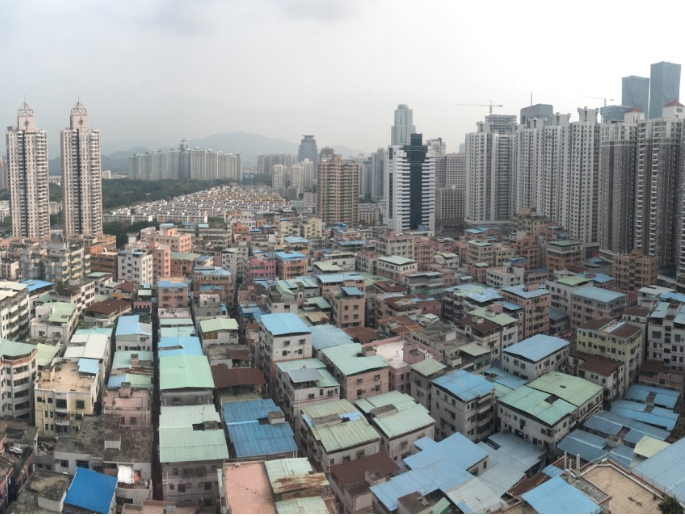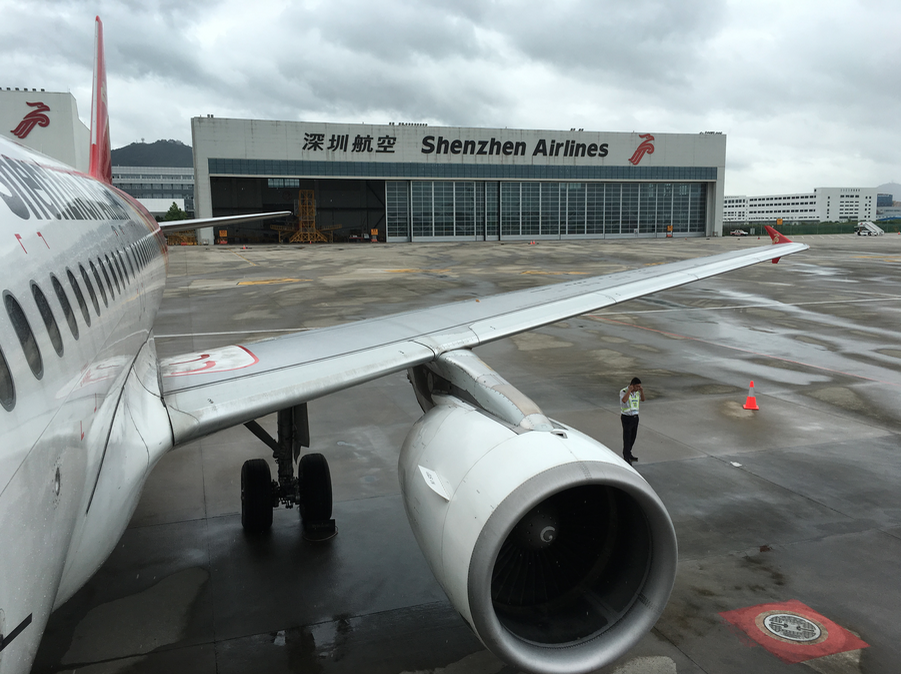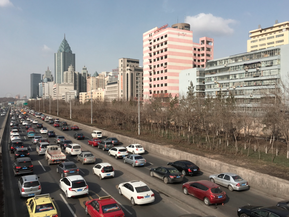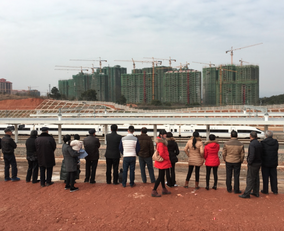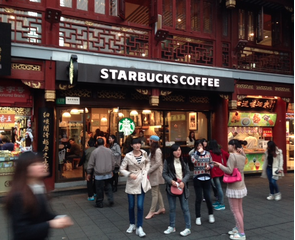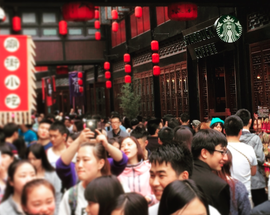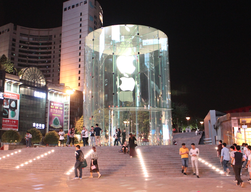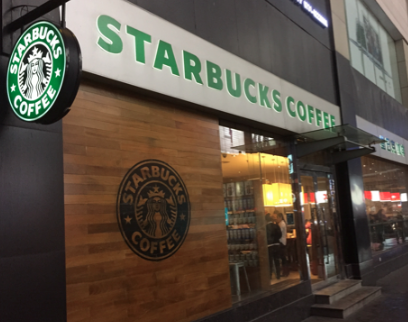Starbucks and Shenzhen, China: Green Mermaids Catch up with the Fastest Growing Economy in China (2/2)
September 3, 2016
Akira Kondo
|
Starbucks in Shenzhen
With Shenzhen’s extraordinary economic growth over the past decade or even the past half-decade, not only has the city developed itself, but local residents have also turned into modern and fashionable. Interestingly, local residents are relatively young compared with aging Shanghai counterparts. In Shenzhen, you will realize there are more young females than males wherever you are, in the office, on the street, or at the shopping mall. These young ladies are far more fashionable, modern, and global than those in the other cities. They always enjoy newest pink or gold iPhone in hand, dress young, and behave politely. On the other hand, young males seem not much interested in fashion or modernity yet. However, iPhone popularity in Shenzhen is extensive in both genders, like global Shanghai. While Starbucks has announced to add 500 stores every year through 2020, its store counts in Shenzhen should grow faster than the other cities. According to Starbucks Store Locater as of August 30, 2016, there are currently 108 Starbucks stores spread across Shenzhen, more numbers than neighbor Guangzhou’s 97. Today’s young Shenzhen residents, especially females, love to seek modernity and Starbucks totally falls into that category. They always demand the modern third place, where it offers. Having a green mermaid cup in hand is nowadays a status of modernity holder among young Shenzhen residents.
Despite the city’s location near the tropical region, hot beverages, such as Café Latte and Café Mocha as well as Caramel Macchiato, are very popular among Shenzhen consumers. Plus, iced drinks as well as Frappuccino products are also popular depending on time of the day and the season. With their higher-than-nationwide average income levels, they have less concern about inside their wallets when purchasing premium Starbucks products.
In addition, Shenzhen residents are more civilized than residents in other cities probably due to the proximity to Hong Kong. You may realize a bus or car sometimes stops right in front of a crosswalk when you are about to cross it (in Shanghai or any other cities in China, you will never have such experience, rather the driver blows a horn loudly and the car passes right in front of you). Unlike Shanghainese (Shanghai-born residents), who always like to buy the largest Venti-sized Starbucks drinks to show off its size as a status of wealth to other customers on next tables while not consuming all at the end, Shenzhen customers are rational. They order meaningful size of drinks that they can consume all, sit back, relax, and enjoy their moments quieter than shanghainese counterpart.
In the store at the city’s financial district, white-collar Starbucks customers sip their favorite drinks while making the store their own third place, such as office and reading room. Interestingly, they enjoy real coffee like Americano despite warmer weather in the region. Of course, they may require caffeine-intensive drip coffee or Americano to motivate their work while sweeter-taste-oriented Shanghaiese tend to avoid such drinks.
Starbucks is not the only coffee house in the city. Since the city is relatively new and still lacks coffee shops, more and more coffee houses are popping up across the city to meet fast growing coffee demand. Starbucks is aggressively adding its stores throughout the city, including Reserve stores. Foreign Costa Coffee and Pacific Coffee are also settled in the city to welcome non-Starbucks customers.
Thanks probably to the proximity to Hong Kong, former British colony, milk teas are very popular in Shenzhen. Though milk teas in this case are derivative ones. Again at Baoli Cultural Square, newly opened Shenzhen-based HEECAA teashop delivers creative tea products, such as Royal Cheese Tea as well as classic Royal Tea. As Shenzhen consumers are modernity oriented, they love to try these new drinks if they like or not. In the meantime, WeChat of Shenzhen-born Tencent quickly spreads the reviews of the new tea products and soon later a long line of customers starts to form in front of the shop. Nowadays, reviews are becoming very important sources for Shenzhen consumers. That being said, Shenzhen clearly does not offer a free lunch for global companies, such as Starbucks, while domestic companies are gradually gaining competitiveness.
Along with Starbucks’ expansion in Shenzhen, the city continues to develop its modernity as it is going to be China’s San Francisco Bay Area. Young technology companies led by WeChat’s Tencent, telecommunication multinational ZTE, and a leading personal drone-marker DJI Technology are gaining their presence in the city while aging traditional state owned companies, such as China Mobile and Bank of China, are settled in capital Beijing. In the meantime, Tencent is expected to unveil its new modern twin-tower headquarter next year, like the world’s most valuable Apple setting up its new Apple Loop headquarter in Cupertino in coming years. While Shenzhen-native tech companies gain momentum, booming housing prices in central Futian and bayside Shekou along with greater Shenzhen are clearly intact. On the back of the newly opened Hilton Shenzhen Futian, hundreds of aging houses (actually a six story apartment buildings. In China, apartment is called a house) with their colorful rooftops are gathered together while modern high-rise apartments are circling around them. Residents in those aging houses are mostly native Shenzhen people who have lived there for more than a decade. Their wealth is left behind as wealthier residents have moved to modern high-rise apartments behind or popular fast developing Shekou Shenzhen Bay area (However, those residents in aging apartments may eventually have a chance to receive massive cash allowance compensation once the government expels from the buildings). On the other hand, those who have less wealth have to move out of expensive central areas to outer area, such as Bao’an, where rural environment still remains.

(L) High-rise apartments are circling around the aging apartments right behind of newly-opened Hilton Futian Shenzhen. (C) Inside those aging apartments back of Hilton Futian Shenzhen, endless local restaurants and shops welcome local residents throughout the day under perfect competition. (R) High-rise apartments in coastal Shenzhen are even more popular and the housing prices in Shekou area are skyrocketing.
Deng Xiaoping, a former Communist Party leader, opened its economic door to outside world through establishing the Special Economic Zone (SEZ) in 1979. Since Shenzhen was added in its original SEZ, the city has attracted massive foreign direct investments from multinational companies across the globe, including Starbucks. He surely would have never expected that more than a hundred of shiny green mermaid signs were spread around his statue at Lianhua Mountain Park in the center of Shenzhen while people visited his statue with colorful iPhone in hand. Although Deng was not able to enjoy Starbucks during his famous Southern Tour back in 1992 and his life in China, he would have believed his economic reform was a great success if he could see today’s Shenzhen and Starbucks throughout the city.
<Go Back to Previous Page - Basic Facts: Shenzhen> |
<Previous Page>
More Article on
|
